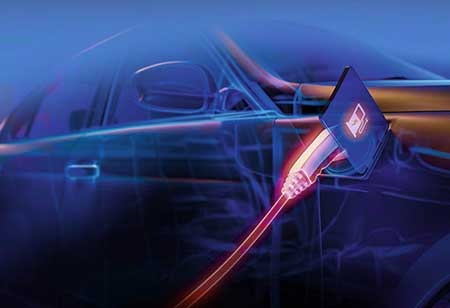THANK YOU FOR SUBSCRIBING
THANK YOU FOR SUBSCRIBING
Be first to read the latest tech news, Industry Leader's Insights, and CIO interviews of medium and large enterprises exclusively from Auto Tech Outlook

By
Auto Tech Outlook | Tuesday, March 11, 2025
Stay ahead of the industry with exclusive feature stories on the top companies, expert insights and the latest news delivered straight to your inbox. Subscribe today.
Europe’s adoption of V2X technologies positions it as a global leader in the connected and autonomous vehicle domain. However, addressing the existing challenges and ensuring inclusivity for all stakeholders will define the success of V2X across the continent.
FREMONT CA: Vehicle-to-Everything (V2X) communication marks a revolutionary shift in how vehicles, infrastructure, and road users interact. Based on real-time communication through wireless technologies, V2X is paving the way for safer, more efficient, and sustainable transportation systems, particularly across Europe, where its implementation is gaining traction. Companies, governments, and technology innovators are uniting to change how mobility functions, backed by key policies and technological advances.
The Current State of V2X in Europe
Europe has been a global leader in adopting and developing V2X technologies. The region’s focus on reducing road fatalities under the Vision Zero framework and achieving net-zero emissions aligns perfectly with the integration of V2X. The European Commission has set specific strategies under its Cooperative Intelligent Transport Systems (C-ITS) initiative to ensure seamless V2X deployment.
Key Developments
Key technological advancements and strategic collaborations are driving the evolution of V2X communication. 5G and cellular-based deployments, particularly Cellular V2X (C-V2X), are gaining traction due to faster data transfer rates, minimal latency, and high reliability. Several pilot projects, including initiatives led by the 5G Automotive Association (5GAA), are being deployed globally, highlighting the increasing role of 5G in real-time vehicular communication.
In parallel, policy and standardization efforts are shaping the regulatory landscape. The European Telecommunications Standards Institute (ETSI) and other governing bodies are working toward harmonized technical frameworks. At the same time, the European Commission’s Delegated Regulation (EU) 2019/2100 has laid a foundation for connected and automated mobility. Additionally, cross-border V2X testing corridors, particularly in regions spanning the Netherlands, Belgium, and Germany, enable large-scale testing under diverse road conditions, fostering real-world validation of cooperative technologies.
The V2X ecosystem is further bolstered by automaker and tech collaborations. Leading automotive manufacturers are joining forces with technology giants to integrate advanced communication solutions with vehicle expertise, driving innovation in connected mobility.
The benefits of V2X communication extend across multiple domains. Regarding road safety, V2X facilitates collision avoidance by enabling vehicles to exchange real-time data and preventing pedestrian accidents through automated alerts. From a traffic efficiency perspective, Vehicle-to-Infrastructure (V2I) communication optimizes traffic flow by coordinating with traffic signals and allowing adaptive navigation based on real-time conditions. Furthermore, sustainability gains are realized through lower emissions, route optimization reduces idling and unnecessary fuel consumption, and enhanced energy management, particularly for electric vehicles, which can interact more effectively with the grid to balance energy use.
The growth of V2X communication in Europe seems inevitable as cities aim for smarter and more sustainable mobility ecosystems. Collaboration between public entities, private enterprises, and standardization bodies will be crucial.
V2X is the cornerstone of the future of transportation, offering safer and more efficient mobility solutions. Europe’s proactive stance on developing and deploying these technologies underscores its commitment to innovation, sustainability, and safety. Whether through advanced 5G networks or collaborative policies, V2X communication is not just transforming how cars talk—it’s ensuring that the language of mobility is universal and forward-looking.
 Copyright © 2025 AutoTech Outlook. All Rights Reserved | Privacy Policy | Subscribe | Sitemap | About us | Feedback Policy | Editorial Policy
Copyright © 2025 AutoTech Outlook. All Rights Reserved | Privacy Policy | Subscribe | Sitemap | About us | Feedback Policy | Editorial Policy 



